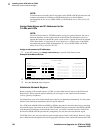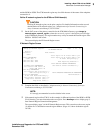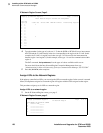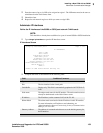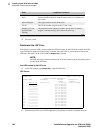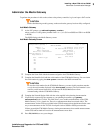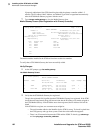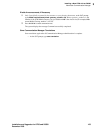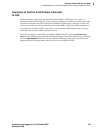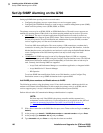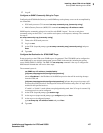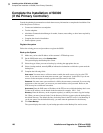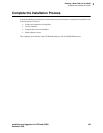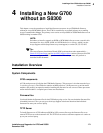
3
Installing a New G700 with an S8300
Considerations for IP Phones Supported by a Local Survivable Processor
164 Installation and Upgrades for G700 and S8300
December 2003
Considerations for IP Phones Supported by a Local
Survivable Processor
A DHCP server assigns IP addresses to IP endpoints dynamically. Avaya IP phones perform a DHCP
discover request to receive an IP address, as well as receive parameters necessary to function correctly.
These parameters include the location of the call control server, the location of the TFTP server, as well
as the directory on the TFTP server from which the phone receives its upgrades.
When preparing a DHCP server to work with Avaya IP phones, there is an option that must be
administered to allow the Avaya phone to receive the DHCP offer. This option is “site-specific-option-
number” (sson) 176. Different DHCP servers allow for this administration in different ways, but the sson
option must be mapped to 176. Then the option can be set up to send the information desired to the Avaya
phones for the intended activity.
The sson option sends a string that includes the IP address of the Avaya Call Controller with which the
phone will register (“MCIPADD=www.xxx.yyy.zzz”). In an S8500 or S8700 system, this is a CLAN
address; in an S8300 system, this is the IP address of the S8300. Multiple addresses can be administered
to allow for LSP failover. The second address in the MCIPADD list may be an IP address for a second
S8700 CLAN board or an LSP. If a second CLAN board is used, then the third address must be the LSP,
and any subsequent addresses should be alternate LSPs. Local LSPs should appear first in the list, with
remote LSPs later in the list as possible back ups.
If an IP phone looses its connection to the primary controller, it will try to register with an LSP associated
with its network region (as defined on page 3 of the IP Network Region form). However, if the phone
resets, it looses this information and goes to the DHCP server for a controller. If the only controller in the
MCIPADD list is the primary controller, and if the connection to the primary controller is down, the
phone cannot register. Having an LSP in the MCIPADD list gives the IP phones an alternate controller in
this situation.
NOTE:
It is strongly recommended that at least one LSP be administered in the MCIPADD list.
Also included in the sson option string is the “MCPORT=1719”. This is the port the phone will listen on
for signalling traffic to the call controller. Next is the tftp server field. This field indicates to the phone
where it is to receive firmware updates, along with the tftp directory field.
All phones for which the DHCP server has an LSP as the second address in the MCIPADD list should be
administered to be in the same network region. Or, if administered to be in different network regions, the
network regions involved should be interconnected. Use the ip-network-map form on the primary
controller to put the IP phones in the same network region. On the ip-network-map form, a range of IP
addresses (or a subnet) can be specified to be in a single network region. Enter the IP address range, or
subnet, that contains the IP addresses of the IP phones and enter the desired network region number for
that address range. The same address range or subnet must then be administered on the DHCP server. If it
is not desired that all the phones be in the same network region, the form “ip-network-region #” should be
used to interconnect all the network regions that contain those phones.



